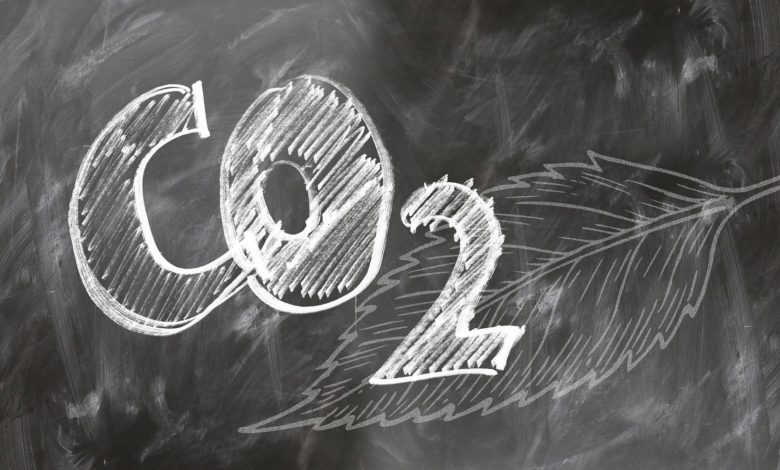Greenhouse Gases and Their Effects on Global Warming

Greenhouse gases that provide the natural greenhouse effect are gases that absorb and emit infrared radiation emitted by the Earth. Greenhouse gases, which make up 1% of the atmosphere, prevent the reflection of sunlight back into space and help the distribution of heat to the earth. Thanks to the natural balance in the amount of greenhouse gases before the Industrial Revolution, a significant part of the earth was protected from extreme cold. So much so that the current 15 ° C earth average temperature would hover at -18 ° C in the absence of greenhouse gases.
In terms of climate change, the problem is not the presence of greenhouse gases in the atmosphere, but rather the development of factory-style production, industrialization, increased consumption of fossil fuels, and the increase in the amount of greenhouse gas emitted into the atmosphere.
- The most abundant greenhouse gases in the Earth’s atmosphere are:
- Water vapor
- Carbon dioxide
- Methane
- Nitrous oxide
- Ozone
- Chlorofluorocarbons
- Hydrofluoride carbons
The Kyoto Protocol, which was opened for signature with the negotiations held after the United Nations Framework Convention on Climate Change, which is the most important international framework for combating global warming and climate change in 1997, and aims to reduce the emission of carbon dioxide and other gases that cause greenhouse effect, six greenhouse gases and emissions in Annex-A resources are listed. These greenhouse gases are:
- Carbon dioxide
- Methane
- Nitrous Oxide
- Hydrofluoride carbons
- Perfluoro carbons
- Sulfur-hexa fluoride
The rate of greenhouse gases in the atmosphere increases negatively from year to year and causes global warming. Atmospheric accumulations of carbon dioxide, methane and nitrous oxide gases have reached record levels in the last 800,000 years (IPCC 5th Assessment Report, 2014). In this report, “The most important factor that forces the system to heat up is the increase in carbon dioxide gas in the atmosphere… This increase is due to human origin” was determined. The accumulation of carbon dioxide in the atmosphere increased from 280 ppm in the pre-industrial period to 412.43 ppm in 2019 (NASA, 2020).
Carbon dioxide
Carbon dioxide mixes into the atmosphere when fossil fuels (oil, coal, natural gas) are used in industry. This ratio constitutes 80-85% of the total carbon dioxide emission. With the increasing use of fossil fuels and the destruction of forests, the amount of carbon dioxide in the atmosphere has increased rapidly. Among greenhouse gases, the effect of carbon dioxide on global warming is around 50%. This depends on both the amount of release and the longevity of its molecules (50-100 years). The primary measure taken against global warming is the reduction of carbon dioxide emissions.
Methane
Methane gas is formed by the decomposition of organic residues in an oxygen-free environment. Rice fields, farm manure, garbage and swamps are the sources of its formation. The impact of methane gas, which has a short molecular life, in global warming is around 13%. Man-made methane gas generation includes rice harvesting, landfills, fossil fuel entrainment and livestock farming. This is much more than natural methane gas generation.
Nitrogen Oxides
Nitrogen Oxides are emissions from the soil. 10-15 kg of Nitrogen Oxide is released for each ton of nitrogen naturally or as a result of human activities (fertilizer) on the earth’s surface. Sources of nitrogen oxides are fossil fuels, exhaust gases, organic substances. Global warming share is 5%.
Water vapor
The greenhouse effect of water vapor is intense, but it is rare in the atmosphere close to the earth. It is usually in the higher layers of the atmosphere where clouds form. It is more effective in holding and reflecting the sun rays. The contribution of water vapor to global warming reaches 50%. Its amount and duration of presence in the atmosphere is very high.
Chlorofluorocarbons
Chlorofluorocarbons are not produced from natural sources. Gases in refrigeration equipment (refrigerator, air conditioner, fire extinguisher), spray sprayers, computer cleaners and gases used in plastic production are the main artificial sources. They contribute 22% to global warming. These gases; DDT, Dioxin, Mercury, Lead, Vinichloride, PCBs, Sulfur Dioxide, Sodium nitrate and Polymer.
Ozone
The main source of ozone is the reaction of nitrogen oxides with ultraviolet rays. The formation of this gas depends on the exhaust gases and sunlight. The greenhouse effect is 7% (TUBİTAK, 2008). Ozone, which is a toxic pollutant near the earth, is vital in higher layers. It absorbs the ultraviolet rays coming from the sun and eliminates their burning effects.
Diazotoxide Gas
Most of the diazotoxide emission occurs during the use of agricultural land, the chemical industry, as well as the production of cattle feed. It has increased by 17% since industrialization and this increase continues.
Halocarbon Gases
They are used in sprays and general coolers in perfume production. These gases convert the ozone in the ozone layer into oxygen and its derivatives, and thin the ozone layer. When the ozone layer gets thinner, ultraviolet rays reach the world more and a negative effect occurs. Halocarbons also cause global warming by trapping sunlight reflected in the atmosphere.
Sources and emission volumes of human-induced greenhouse gases
The main sources of human-induced greenhouse gases are:
• Generating electricity with fossil fuels, burning these fuels for use in transportation, industry and homes
Land use changes through agriculture and deforestation
• Filling the waste in the land
• Use of fluorinated gases in the industrial sector (European Environment Agency-2017)
Greenhouse gas mitigation studies are carried out in all sectors that cause greenhouse gases. These sectors and global greenhouse gas emissions:
- Electricity and Heat Generation 0.25%
- Agriculture, Forestry and Land Use 0.24%
- Industry 0.21%
- Transportation 0.14%
- Other Energy 0.10%
- Buildings 0.06% (IPCC, 2014)
Reducing the emission of greenhouse gases, which have an important effect on global warming, is among the most important measures in combating global warming. Climate change meetings were held under the leadership of the World Meteorological Organization (WMO).
The United Nations Conference on Environment and Development was one of the most important meetings in Rio, Brazil in 1992. At this conference, the United Nations Framework Convention on Climate Change (UNFCCC) was opened for signature. The main purpose of UNFCCC is to reduce greenhouse gas emissions, research and technological cooperation, and protect greenhouse sinks.
Kyoto Protocol (opening for signature 1997, effective 2005) aims to reduce greenhouse gases below the targets set within the framework of the UNFCCC. Countries included in the Annex-B List targeted to reduce their greenhouse gas emissions to 5% below the 1990 level during the 1st Contracting period (2008-2012).





